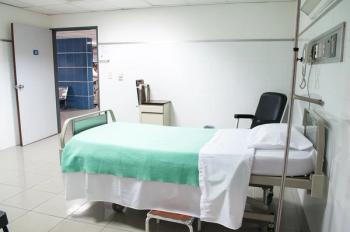
Risk Stratification for ABSSSI
Segment Description: Christian Sandrock, MD, MPH, FCCP, expands on determining the severity of an acute bacterial skin and skin structure infection, and how to stratify patients based on SIRS criteria, comorbidities and the size of the infection.
Christian Sandrock, MD, MPH, FCCP: Many of the factors that go into looking at the severity of a skin and soft tissue infection can be complex. We obviously look at things such as clinical exam, size of the lesion, type of a lesion, what we call patient clinical status—are they stable or unstable—and a number of different laboratory values. Those all go into how we treat these patients. For example, if we look at an outpatient type of a patient where they step in—classic outpatient treatment—usually their abscess is under 2 to 3 cm, they have no signs of systemic illness—that means no fevers, no chills, normal white cell count should you draw that, normal heart rate, general stability. The lesion is just a lesion and it’s generally relatively small. So that’s a classic outpatient. For an inpatient, usually they’re larger lesions; again an abscess of 4 to 5 cm larger. Generally, if it’s 75 cm2, if it’s cellulitis, that would be an example of something that’s large enough to probably be admitted, or at least evaluated more extensively where you’re not going to have outpatient oral therapy. And then if you have any signs of systemic illness, that plays a role.
The big things we worry about is classically, we talk about if you meet SIRS—or systemic inflammatory response syndrome criteria—so tachycardic, tachypneic or breathing fast, elevated white blood cell count, unstable blood pressure. Those are things that suggest they’re more unstable. Now, interestingly enough, when you look at some of the different studies, particularly some of dalbavancin’s (Dalvance) data, they actually had a moderate amount of systemic illness. I think a little over 80% of the patients had a fever, 40% of the patients had a white blood cell count, and many of those patients were treated as outpatients.
For us at UC Davis, we will look at that having an elevated white count or a leukocytosis, having tachycardia, having a fever, doesn’t preclude you from going home. It just means that yes, you have a systemic finding but if you don’t have much else, we still feel pretty comfortable giving you a lipoglycopeptide, like dalbavancin, and then sending you home. What keeps you in the hospital, are certain things that concern us. An elevated lactate, which suggests you have a more severe infection, that will definitely get you admitted. If you have low blood pressure and we give you some IV fluids, some crystalloid, and your blood pressure doesn’t stabilize, definitely we’re not going to send you home in those cases for sure. Those, when we looked at our patients, if you had a low blood pressure and elevated lactate, about 65% of those patients had positive blood cultures. Now that becomes important because we never want to send those patients home. We want to be able to select those patients. If you only had a fever and a skin and soft tissue infection, only about 6% of our patients had positive blood cultures, so we can use that to separate things.
Then lastly, it’s area of infection. There are a couple of areas for us which are very worrisome. One of them is periorbital cellulitis, so around the eye. Any skin infection around that area can be very risky because it can track into the ocular space and the base of the brain. Secondarily, is actually what we call Fournier gangrene, or the perineal area. So particularly in men and women, so that area sort of round the vulva, vagina, penis area, and the perianal area. Any of those we generally will watch because those can track up into the pelvis much more quickly, and we often don’t keep those patients at home, we admit them.
Then lastly is digit cellulitis. Usually if it involves a finger, we have our hand surgeons consult. Whomever is on call will actually give their blessing and that’s because those infections can spread. Swelling can lead to digit necrosis and amputation quickly. So, if they come in and say, “Hey, that looks pretty stable”, we feel comfortable treating it as an outpatient; they can follow up in 2 days, then no problem, we’ll certainly do that and send them home. Those are really the big preclusions we have. Obviously, the other big thing is if we do think it needs to be debrided. A big abscess that needs to be debrided and is more complicated, that can be done in our ED [emergency department], and our surgeons want to take them into the OR [operating room], or if there’s any concerns of necrotizing fasciitis, they’re admitted in those cases as well.
The perfect profile for a patient being admitted is that number 1, has a large skin and soft tissue infection. We define that as 75 cm2 or larger. Number 2, generally has more than one systemic sign of infection, so again fever, leukocytosis, tachycardia. Definitely if you have a low or an unstable blood pressure, an elevated lactate, you get admitted. Those are really the big features we have. Other minor features that will play a role, is if your lesion is 75 cm2 but is more complex and needs surgery, and if there’s a big social factor that prevents you from going home.
For example, the other day when I admitted a patient, we saw that he actually had a lesion that was not very large, was febrile, but also was floridly psychotic and talked about all the people he wanted to harm. Unfortunately, we just can’t send him home, even though his clinical disease from his skin infection allowed him to certainly go home, with either a single dose of lipoglycopeptide or oral therapy. It prevented him in all regards from going home, just because he had active psychiatric disease. Just making sure some of those main comorbidities are under control play a role as well.
Newsletter
Stay ahead of emerging infectious disease threats with expert insights and breaking research. Subscribe now to get updates delivered straight to your inbox.























































































































































































































































































